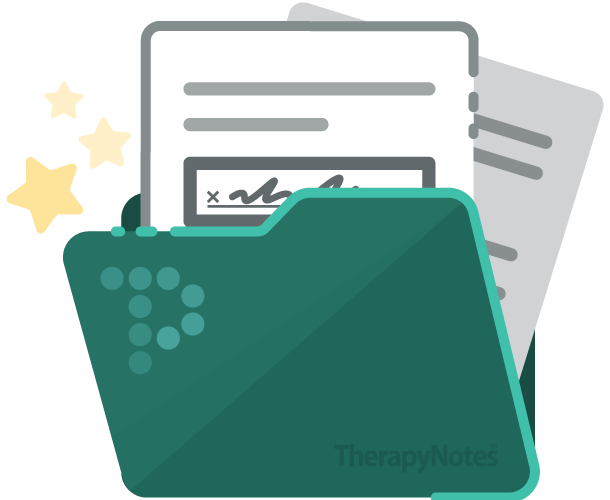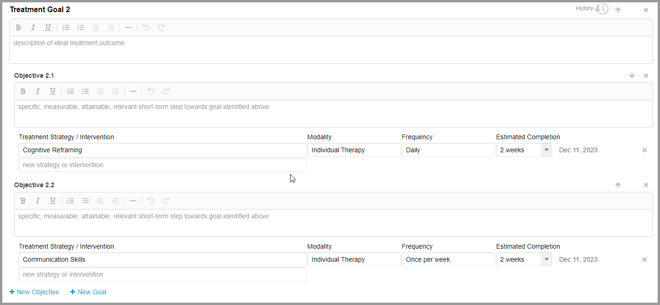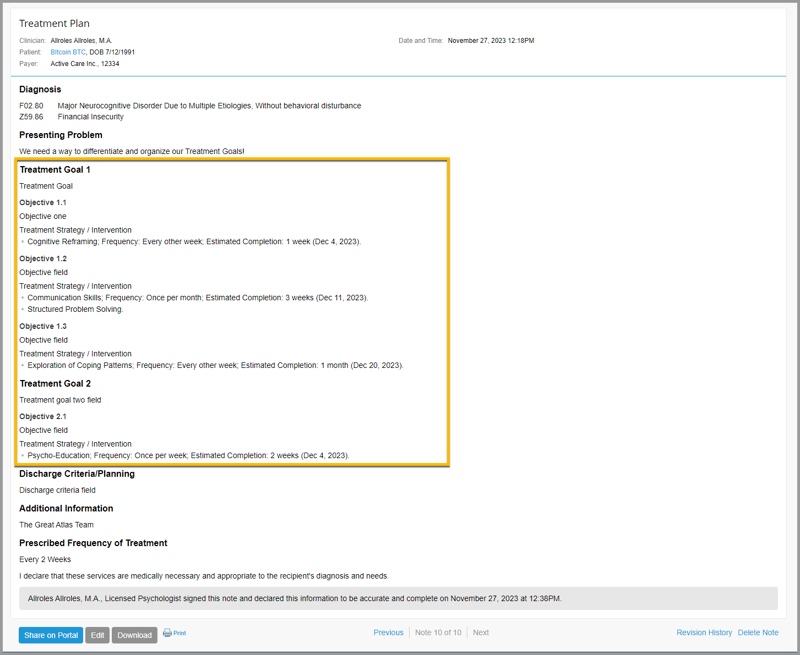What's New: Treatment Plan Upgrades and 4 New Outcome Measures
By TherapyNotes, LLC on December 20, 2023

We have upgraded Treatment Plans to support multiple goals and a redesigned intervention interface. We are also releasing 4 new outcome measures: the Pediatric Symptom Checklist, the Life Events Checklist, the WHO Disability Assessment Schedule 2.0, and the Problematic Pornography Consumption Scale.
Treatment Plan Goals and Objectives
The latest update to Treatment Plans adds the ability to create and organize multiple Goals with nested Objectives. You'll also see new Modality and Frequency fields that automatically calculate the Estimated Completed Date for the Treatment Strategy.

Once completed, the Treatment Plan gives an organized visual of Goals and Objectives that can be quickly identified. Goals and Objectives are automatically numbered if there are more than one.

New Outcome Measures
Pediatric Symptom Checklist (PSC-35)
The Pediatric Symptom Checklist is a brief questionnaire completed by parents or guardians to help identify and assess changes in psychosocial problems in children ages 3-17 years old. It can be completed at any point during mental health treatment, but is often completed at intake and again at every 3, 6, or 12 months that a child remains in treatment.
Life Events Checklist (LEC-5)
The Life Events Checklist for DSM-5 assesses for exposure to events known to potentially result in PTSD or distress.
WHO Disability Assessment Schedule 2.0 (WHODAS)
The WHO Disability Assessment Schedule 2.0 provides a standardized method for measuring health and disability of adult populations. It captures their level of functioning across six domains of life: cognition, mobility, self-care, getting along, life activities, and societal participation. The assessment is applicable for all diseases and adult populations. Comparing results before and after given interventions can provide clinicians with information on the effectiveness of those interventions.
Problematic Pornography Consumption Scale (PPCS-18)
The Problematic Pornography Consumption Scale is a brief tool that assesses problematic pornography use based on Griffith's six-component addiction model.
As with all existing outcome measures, these can be completed in English or Spanish. Once completed and submitted, the questionnaire will be available on the client's chart.
* The content of this post is intended to serve as general advice and information. It is not to be taken as legal advice and may not account for all rules and regulations in every jurisdiction. For legal advice, please contact an attorney.
Get more content like this, delivered right to your inbox. Subscribe to our newsletter.
More Content You'll Enjoy

What’s New: Send Documents to All Patients and More

Maintenance Release 2025.10
